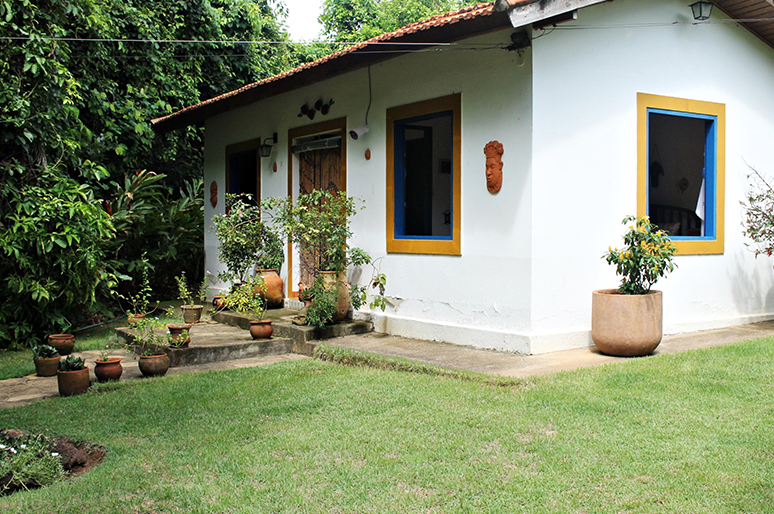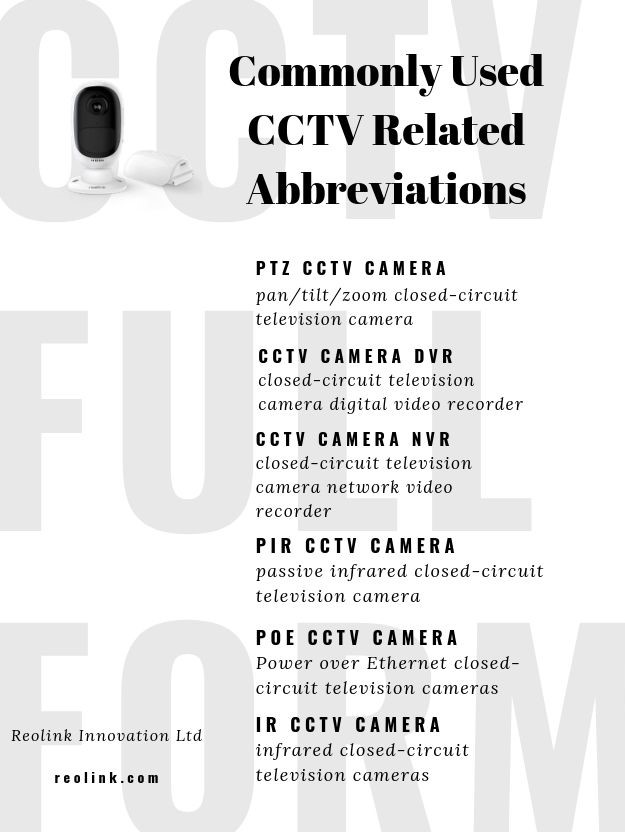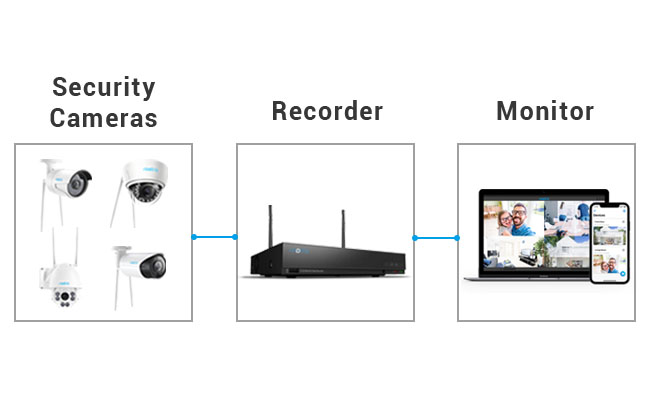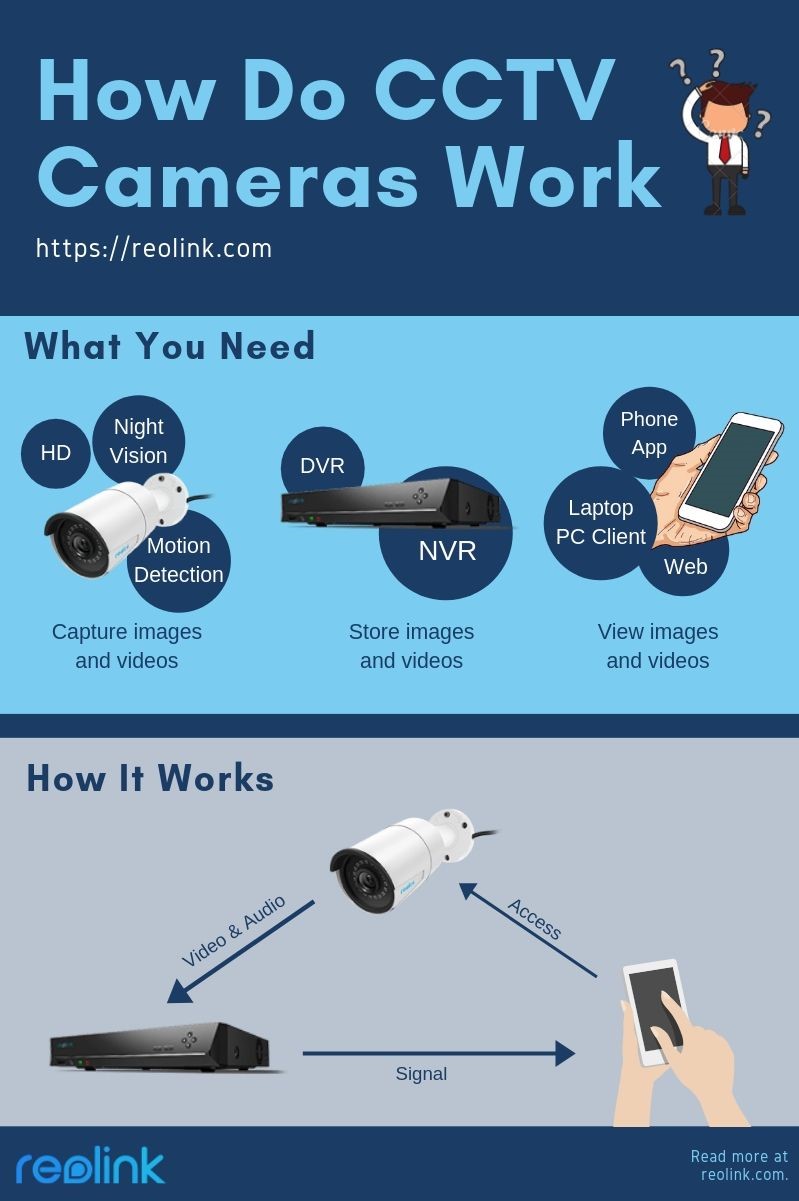What is CCTV? CCTV Full Form Explained and How It Works

If you're looking for answers to "What is CCTV stands for?" and "What is the CCTV Full Form?", then you've come to the right place. CCTV stands for Closed Circuit Television, and it refers to a system that uses video cameras to transmit signals to a specific, limited set of monitors.
The "closed circuit" aspect of CCTV means that the cameras are connected to the monitors via a private transmission system, which ensures that the footage is only viewed by authorized individuals.
Besides the commonly known CCTV security camera, the full name of CCTV for other purposes may vary. In this blog, we'll explore the meaning and full form of CCTV, and how it works.
What Is the Full Form of CCTV
The CCTV full form is closed-circuit television.
It is a system used to transmit video signals from CCTV cameras to monitors or recorders. It is called "closed-circuit" because the signals are not broadcast publicly, but are accessed by certain authorized users.
Accordingly, the full form of CCTV cameras is closed-circuit television cameras.
Due to the extensive application of CCTV systems in security industry, CCTV cameras mainly refer to security cameras for home and business surveillance.
Below are other important abbreviations related with CCTV cameras for your information.
- PTZ CCTV camera full form: pan/tilt/zoom closed-circuit television camera
- CCTV camera DVR full form: closed-circuit television camera digital video recorder
- CCTV camera NVR full form: closed-circuit television camera network video recorder
- PIR CCTV camera full form: passive infrared closed-circuit television camera
- PoE CCTV camera full form: Power over Ethernet closed-circuit television cameras
- IR CCTV camera full form: infrared closed-circuit television cameras

Ready. Set. Save!
Big selection, big SAVING. Get your hands on Reolink security cameras & systems before the best prices slip away!
Interesting Facts About CCTV Meaning
-
The earliest documented application of the CCTV camera system dates back to 1942 – longer than you may think. Walter Bruch, a noted German engineer, designed and installed the system that used CCTV cameras to observe the launch of V2 rockets on monitors.
-
It wasn't until 1949 that the CCTV system was first used commercially. In that year, an American company launched Vericon, to keep an eye on dangerous industrial processes or bring a close-up of surgical operations to students.
-
Thanks to CCTV technology, audiences can enjoy pay-per-view sports streaming in the 1970s. "The Rumble in the Jungle" fight alone drew jaw-dropping 50 million CCTV viewers worldwide at that time – a quite historical event!
-
The primitive CCTV systems was not applied in security monitoring until 1968 when New York was first to install video cameras in an effort to fight crime. Since then, CCTV cameras began to spread across the world – rapidly and unstoppably.
-
There are more than 350 million CCTV cameras worldwide mainly for security monitoring in public areas or private residences – a truly enormous amount!
-
If you are in the US, you will be captured by security cameras over 200 times a day - not a surprise if you know every 10 people in America own more than one security camera.
-
People in different countries may have different names for security cameras, like surveillance cameras or IP cameras. The British prefer to use “CCTV cameras” when they mention security cameras.
-
A majority of CCTV cameras are IP cameras that connect to the Internet and can be accessed wherever the Internet is available. That means CCTV cameras are not totally “closed-circuit” anymore.
How Do CCTV Cameras Work
The CCTV camera system at first only consists of security cameras and monitors. Afterwards, various recording units come out for video storage and review.
A CCTV camera system, with full form in English as closed-circuit television camera system, is showed in the following diagram.

Security cameras are used to capture live stream through the lens. After years of development, surveillance cameras can provide higher resolution images and clearer audio.
Even in total darkness at night, security cameras with color night vision technologies can also see clear images in true color.
Moreover, most CCTV cameras equipped with motion detection sensors can trigger alarms when there are human movements. They are a dependable safeguard against burglary and theft.
After capturing videos or audios, CCTV surveillance cameras transmit signals to the security camera recorders for documenting and replaying key moments. DVRs or NVRs are often employed in the CCTV camera system, realizing 24/7 reliable recording.
Note: Some high-end closed-circuit television cameras (the full form for CCTV cameras), also come with a micro SD card (slot) for local storage of motion events when they are detected.
Video clips recorded in the DVRs/NVRs or SD cards can be replayed anytime in your mobile phone, computer or TV monitor, even you are far away.
Check out this infographic to have a better understanding of how the CCTV system works:

What Are the Types of CCTV Cameras?
CCTV cameras can be classified into different groups based on different factors.
For example, in terms of signal transmission mediums, CCTV surveillance cameras can be divided into:
- Analog CCTV cameras
- IP CCTV cameras
Unlike analog systems, IP security cameras have become the mainstream in the security industry by much clearer images, easy remote access, flexible installation and affordable prices, offering you superior protection, convenience and peace of mind.
According to the way IP cameras connect to the Internet, there are
- 3G/4G Cellular surveillance cameras
- PoE surveillance cameras
- WiFi surveillance cameras
You can choose one kind of CCTV cameras that suits your situation.
For example, in the places without the router network such as in the RVs, boats and vacation home or even in the wild, cellular CCTV cameras, like Reolink Go Plus, are the best option.
And you can use PoE security cameras or WiFi security cameras in areas with access to home WiFi Internet like your driveways, gateways or storefronts. Besides, CCTV cameras can be classified according to their power sources or shapes.
Why Is CCTV Used
CCTV cameras, the abbreviation of closed-circuit television cameras, are applied in wide range for different purposes.
1. Crime Prevention and Detection
The primary use of a closed-circuit television camera (the CCTV camera of full form) is warning and deterring burglars, thieves and other criminals.
For example, Reolink Argus 3 Ultra has a PIR motion detector and a built-in siren alarm. When detecting invaders’ movements, it can trigger siren sounds that are effective deterrents for the crime.
At the same time, this camera would send instant push notifications or emails to your mobile phone for you to take response actions and protect your properties.
2. Taking Care of Elders, Children & Pets
Many families use closed-circuit television cameras, the full form of CCTV cameras, in home to keep track of elders, children or pets. After an appropriate setup, you can check in CCTV cameras if elders fall down, children arrive home safely or pets eat food on time.
3. Record Valuable Moments
The beautiful moments of life won't be missed out or blurred over time, thanks to your CCTV cameras that can always witness and record something unbelievable, memorable or even crazy.
You can review the snowball fight with your kids or interesting Halloween party on your phone anytime, or download it on your computer for a backup.
4. Business Use
Monitoring of critical areas such as storefronts, offices or warehouses mainly requires the system of closed-circuit television (the CCTV long form) to take care of your properties or improve employees’ productivity.
No matter you own small or big businesses, with or without Internet access, you can choose the most suitable security camera for your business based on your specific needs.
FAQ
What is CCTV stands for?
CCTV stands for Closed Circuit Television. Essentially, it's a system that uses video cameras to transmit signals to a specific set of monitors. The "closed circuit" part of it means that the cameras are connected to the monitors through a private transmission system, which ensures that only authorized individuals can view the footage.
You're probably most familiar with CCTV cameras being used for security and surveillance purposes, but they can also be used for things like traffic monitoring and industrial process control.
One of the reasons CCTV systems are gaining in popularity is because they're proving to be really effective at deterring crime and improving public safety.
Conclusion
Our explanation of the full form of CCTV provides insight into its vital role in surveillance solutions. If you have any other ideas about CCTV meaning in the security industry, its types and uses, please feel free to leave comments below.
Search
Be in the Know
Security insights & offers right into your inbox

